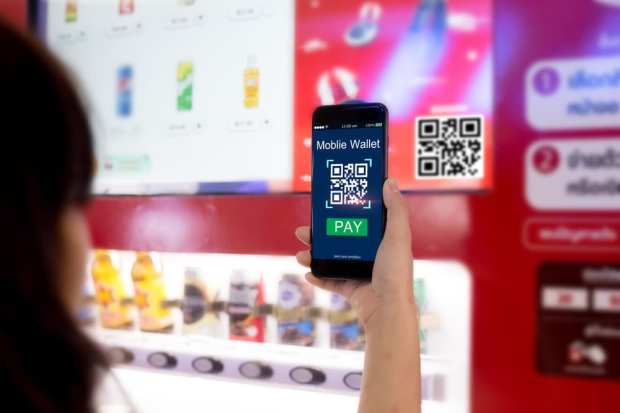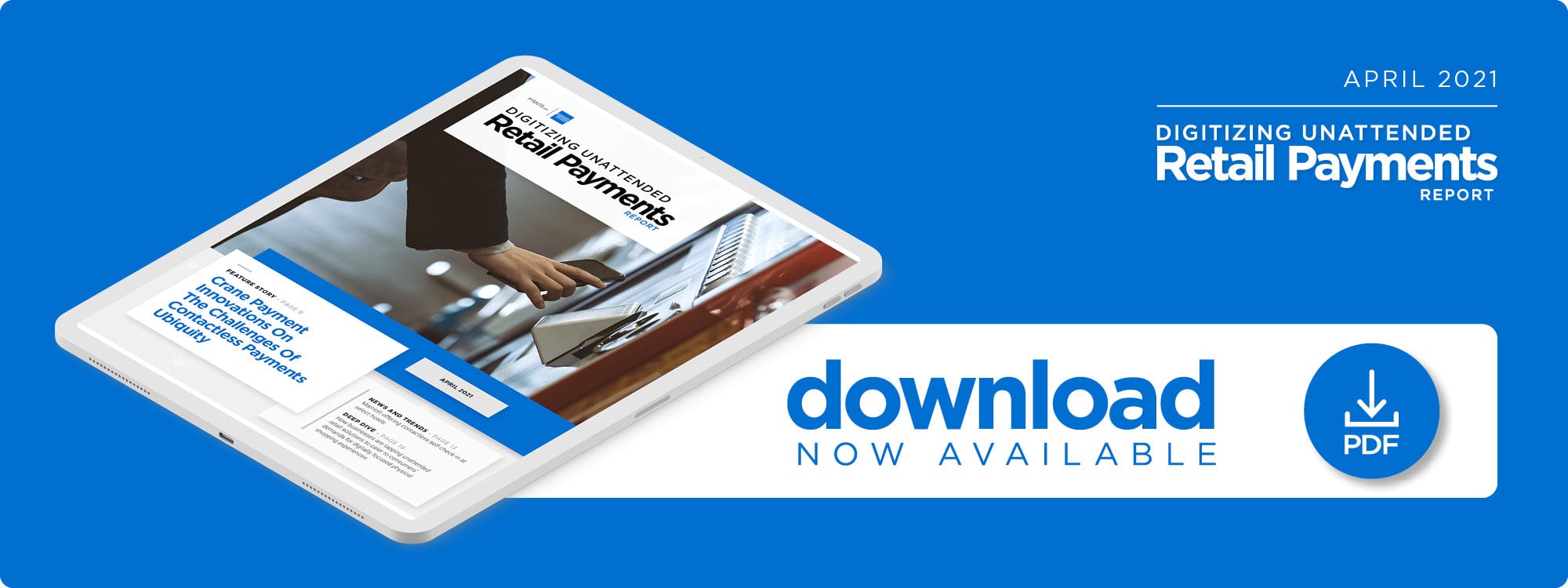The Challenges Of Unattended Retail Payments Ubiquity

The pandemic has truly tested a variety of markets on how prepared they were for a contactless future. Some were unready and slow to pivot, while others were supercharged by the changes in daily consumer behavior and pandemic-induced societal shifts.
Malvern, Pennsylvania-based Crane Payment Innovations (CPI), an automated payment solutions provider, was fully prepared for consumers’ increased preference for contactless payments as they sought ways to decrease interactions with other humans and high-touch surfaces. CPI is a global manufacturer of intelligent payment, cash processing and retail automation technologies serving unattended and semi-attended markets, including vending, financial services, retail, transportation, banking and gaming. The company serves over 100 countries and has one of the largest installed bases of payment and retail automation systems in the world.
Douglas Haddon, vice president of Global Connectivity Strategy and Project Management for CPI, spoke to PYMNTS about how the pandemic helped usher contactless payment solutions into the open and made them a must-have for merchants.
“We’ve seen an accelerated migration to contactless and digital payments because the pandemic has resulted in consumers seeking out touchless buying experiences … and that’s accelerating contactless card issuance,” he said. “Merchants realize now more than ever that they need contactless technologies, so the rest of the retail space is catching up with the technology and user experience designs that we have been deploying in the unattended retail space for years.”
The Pandemic’s Impact
The pandemic affected CPI’s unattended and semi-attended markets differently than traditional retail spaces. Retail has exploded with consumer demand for self-service, doorstep delivery and other cashierless technologies. Haddon also recognized how the increased demand for self-service has crossed over into the brick-and-mortar sector even more.
“Think about how there’s self-service with the ability to order something ahead of time via mobile app,” he said. “Or you can go into a locker and pick up something or someone delivers it to your car. We’ve seen the offerings available in vending machines rapidly change from soda and snacks to more consumer packaged goods (CPGs) — and in the case of the pandemic, even [personal protective equipment (PPE)]. … I’ve spoken to a number of companies that are more brick-and-mortar and that are making vending or self-service an offering in order to extend the convenience to the customer.”
The pandemic has spurred a contactless future for both product delivery and payment. Merchants will therefore have to consider how they will safely get products into consumers’ hands and how not offering these methods could affect how likely consumers are to shop with them. Investments in contactless infrastructure will come at the pressure of consumers as their needs and preferences change. Haddon gave college campuses as an example of how the transition is sparing no segment.
“It used to be physical cards,” he said. “You had your student ID, and that got you into your dorm, the gym, helped you buy items from the bookstore, it got you your lunch and your dinner. All those [transactions] are moving [to] mobile payments. We’re seeing that across college campuses, so … to get onto the college campus as an operator, you have to support … mobile campus cards.”
This same consumer pressure drives trending innovations, such as QR codes and broader acceptance of payment types. All the same, the U.S. has a way to go in building up the infrastructure to compete with other countries’ contactless usage, with less than four in 10 U.S. consumers owning a contactless card or app compared to 90 percent of Chinese consumers.
Key Challenges
Growth to even higher contactless payment usage in the U.S. is buffeted by two main challenges: the absence of educational initiatives targeted at consumers and market fragmentation.
“There’s a whole consumer base that has contactless cards in their wallets and with no idea what the contactless symbol means nor any idea how to use it,” Haddon said.
Merchants must also make contactless payments more accessible to drive uptake.
“A lot of times, I walk into different merchant establishments [and] I don’t know what they accept,” he said. “They could have contactless and then they tell me, ‘Ah, we don’t take Apple Pay.’ Some of the biggest challenges are to the consumers who want to be able to pay with what’s in their pockets … let it be a phone, let it be a card, and know that it’s accepted.”
Haddon said he also found that the lack of ubiquitous loyalty programs has fragmented the contactless space.
“We have such a disjointed market that there is not one application that I can go to any vending machine and use,” he said. “Usually, it’s limited within an operator. So, if the vending operator [that] services a specific location has 1,000 machines, and you have a loyalty app that he offers, you can only use it in those thousand machines. There’s nothing ubiquitous in the vending space that allows the broader consumer base to use a single app to handle product selection, product payment and loyalty.”
Haddon noted that recent CPI research found a more than 50 percent increase in contactless transactions, with one in five transactions occurring on vending machines, indicating a definite shift to contactless. There is plenty room for growth, however.
“Once the infrastructure’s built, once the people have the cards, once everybody’s educated, contactless will definitely become the preferred payment,” he said.
Meeting Expectations
Self-service technologies and vending machines disrupt the payments space by eliminating friction from transactions. The pandemic has helped popularize these tools’ appeal, and consumers’ adjustments to their payment behaviors over the last year will likely persist — even after the global health crisis has eased.
“We’re starting to see more and more things become vendable or … available via self-service,” Haddon said. “I think there’s even behavioral changes that are becoming the standard expectations of consumers. And in the grand scheme of things, that’s an attractive deal for the merchants.”
If merchants can keep pace with contactless innovations and further education about their benefits, consumers are sure to engage with them as they continue to seek speed, safety and convenience.

